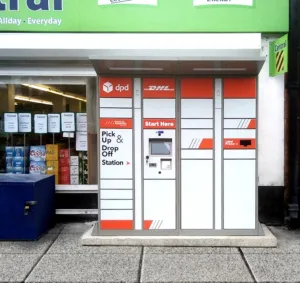By Mohan Krishnan, Global Head, Retail Strategic Initiatives and Ravikanth Parvatam, Retail Solution Architect & Data Scientist at Tata Consultancy Services
As customers prepare to return to stores emboldened by the vaccination rollout, safety and convenience will continue to be their main concerns. Retailers will need to respond to important questions such as is the fitting room safe and hygienic? How can I check item information without touching the products? Does the store accept contactless payments? Can I still buy online and pick up or return in store?
Despite stores reopening, customers have grown accustomed to the convenience of eCommerce and this is pushing retailers to re-evaluate how their offerings stack up in the omnichannel customer experience journey.
Vision of future stores
Consumers seek a return to normal but they don’t want to step into outdated stores. Instead, they expect vibrant hubs of experiences and retailers now have great opportunities to improve in-store exploration (live commerce), selection (virtual fitting rooms) and checkout (contactless payments) as well as streamlining store execution through AI driven autonomous operations.
The key strategy for investing in stores of the future will be to deploy a flexible and scalable unified commerce platform and AI-powered core retail operations for a real-time view of operations. Equipped with predictive insights and recommendations on next-best actions, the stores will be able to deliver exceptional and uninterrupted customer experiences while improving associate productivity and morale and reducing costs.
Store transformation roadmap for realising future stores
The challenges of the past year have been to respond to fast changing market priorities, including omnichannel fulfilment, creating a safe shopping environment for associates and customers, investing in effective training for staff and exploring new business models. Retailers can create future stores with a three-step approach:
Step 1: Define an executable strategy aligned to business goals and vision
When evaluating which capabilities to invest in, retailers should consider business transformation goals, priorities and competitive differentiation acrosssix key areas:
- Recalibrate the store cost structure and Profit and Loss
- Deliver superior CX
- Adopt cognitive workforce tools
- Orchestrate unified omnichannel customer journeys
- Enable future payments and checkout
- Ensure ‘always-on’ stores
Based on the above, retailers need to define a new operating model. A leading UK food retailer, for example, piloted a computer vision-based shrink management solution for self-checkout. Early results indicated a potential savings of ₤10 million ((about $11.8 million) annually, improving margin and inventory accuracy.
As stores become technology driven, the digital ecosystem needs to be ‘always-on’ for a consistent experience, and this can be achieved by using autonomous and self-healing AI Ops. Several retailers are leveraging AI-powered merchandising to increase sales and margins with hyper localised assortments, dynamic pricing, and space optimisation. Loss prevention is yet another area where retailers are leveraging image and video analytics.
Step 2: Establish a robust and unified foundation
The biggest challenge in delivering seamless value to customers is the lack of a unified approach across different channels, brands, and geographies. Retailers must establish a unified data foundation and innovation framework that incorporates inventory visibility, flexible routing and demand fulfilment.
Establish an algorithmic data foundation
Underpinning the vision of a future store is the ability to execute integrated, value chain optimised decisions in real time. This can be realised by orchestrating data and algorithms across the entire value chain and reimagining it using automation and intelligence solutions.
Unify the enterprise channels
Obtain a single view of customers, inventory, supply chain, and one unified view of all events in the stores including sensor data, enterprise transaction data and in-store customer behaviour data.
Unify the value chain
Eliminate organisational silos to ensure a cross-channel view of pricing, assortment, promotions as well as last mile and provide the products and services required by customers.
Create an ecosystem for accelerated innovation
Retailers should adopt a flexible operating model by curating an ecosystem of start-ups, academic institutes, and tech leaders to enhance customer experience, boost productivity and profitability, and establish competitive differentiation.
Step 3: Execute at scale and unlock benefits
There is a plethora of technologies that retailers can adopt to actualise future stores. A UK grocery retailer has launched a program to roll out electronic shelf labels (ESLs) across stores. In the US, a pharmacy retailer is investing in clever energy-saving options for zero carbon footprint goal and a consumer electronics retailer is looking at technologies to bridge the online and physical stores. These initiatives improve sales and labour productivity.
Establish an operational plan aligned to business goals and priorities
Create a prioritised list of initiatives aligned to the business transformation priorities and execute them using an agile fail-fast approach.
Leverage change management for store associate and executive buy in
Leverage the support of all stakeholders, including executives and the senior management in communicating the goals and objectives of digital transformation and why it is crucial for the success of the organisation.
Confirm viability with pilots and mitigate risks
Define the success criteria aligned to the business outcomes and experiment with ideas which measure value using pilot stores that represent the business processes, revenue, assortment categories, store formats and customer demographics.
Incorporate a feedback loop
Establish an assessment framework that can measure the benefits of different initiatives and assess if any interventions are required and institute a governance mechanism to prioritise successful initiatives and abort programs that do not meet the stated objectives.
Conclusion
The stores of the future will be powered by a confluence of digital technologies and automated and intelligent operations, as TCS Algo Retail™ creates a level playing platform that allows traditional retailers to compete in the new post-pandemic world. Retailers should move the spotlight from ‘relevance of stores’ to ‘profitable retail’ by embracing an AI driven ‘machine first’ paradigm that can realise significant gains from smarter in-store processes, back-office automation, workforce management, and better compliance.







